We woke up in Ambalavao, Madagascar at 6am to stunning views of textured mountains aglow with golden light from the rising sun. It was like getting presents on Christmas morning since we couldn’t see what was around us when we arrived at night!
After a quick but delicious continental breakfast at the lodge complete with Citronelle tea, we set off for another 10 hour day of driving. Today at least will have some of the bucketlist things I wanted to see in Madagascar; lemurs and where the sapphires come from.
Jump To:
Anja Community Reserve Lemurs
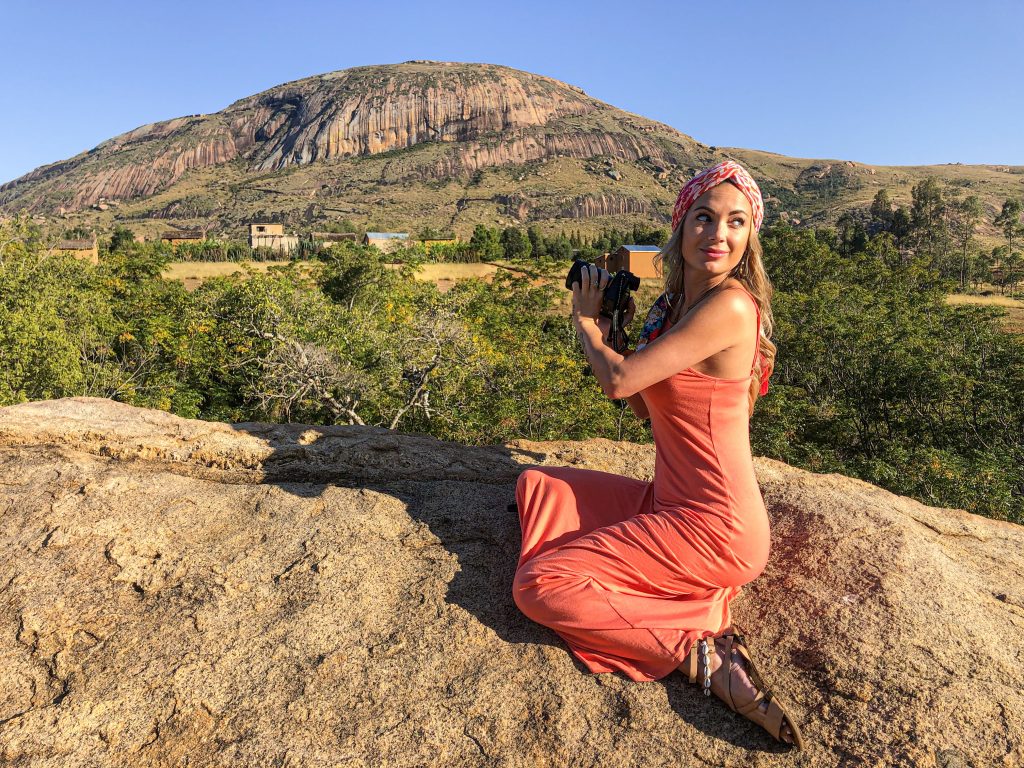
We were prepared to drive an hour to get to the lemur park but it was actually just five minutes down the road from the lodge! We were also told you have to be lucky to see the lemurs, but after just five minutes into the trail, we spotted five of them in the tree tops! They were just hanging out, basking in the sun, like I usually am.
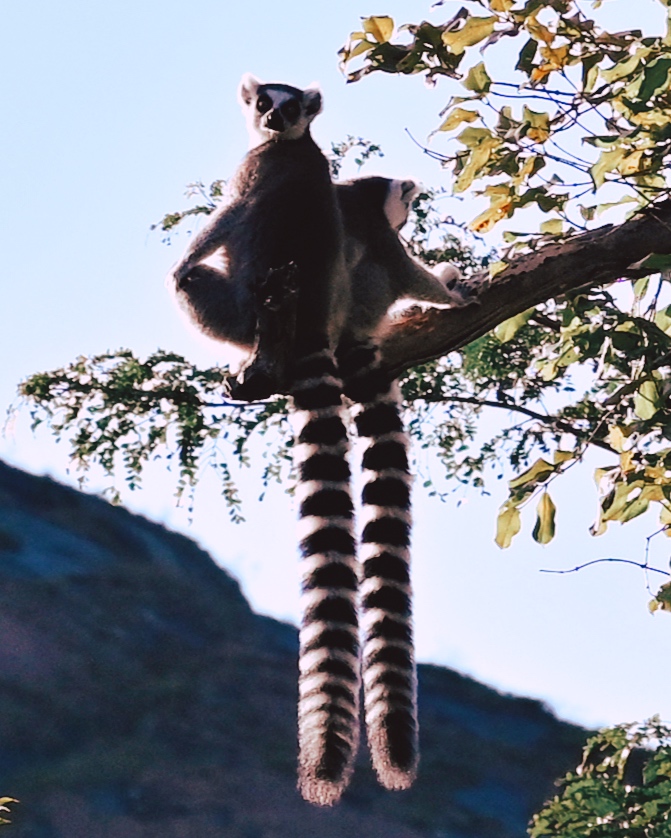
Our guides at the Anja Community Reserve then led us along a trail and to a massive slanted rock that they helped us climb. From the top we had stunning 360 views of the mountainous landscape, and an eye-level close up of all the lemurs in the trees!
I’d say there were about 15-20 scattered in the tree tops, either hanging out, cleaning each other, or jumping from tree to tree! It was absolutely magical!
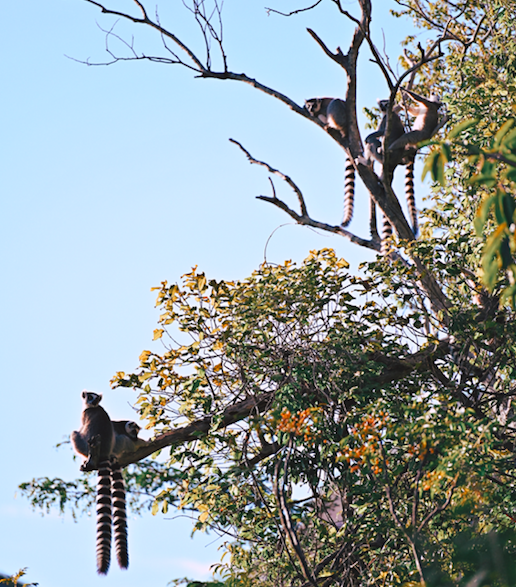
Sadly though, the lemurs in Madagascar are actually endangered. This is due to extreme deforestation that happens because the local people need the natural resources to live and make money. For example timber is one of the most lucrative items the local people can sell.
That being said, it’s of course extremely hard to spot lemurs in wild forests, but there’s a few conservations like Anja where they, and their homes are protected.
Tourism helps keep these conservations and reserves running, because they make money from visitors rather than selling the wood. That means by going to Madagascar and seeing the lemurs, you’re helping keep them alive!
Quick Stop in Ihosy; An “Aggressive” Tribe Town (And What that Means)
Our driver kept referring to some of the towns we passed as “Aggressive Tribes” or “Red Zones”, and at first mention, it made us a bit worried. I’ll get into what the Red Zone means tomorrow but here’s what I learned about why he calls certain towns “Aggressive Tribes”.
He explained that Ihosy was the capital of the Barra Tribe, and that they were the “Boss of the Zebu” (Zebu are the cattle in Madagascar). They are aggressive out of necessity because there are bandits that will try to steal their herds.
They are also aggressive towards tourists sometimes if you you try to take photos of them, which is completely understandable. They know that people have taken photos of them in the past and later sold the images for a lot of money while they get nothing but used. Hence why I have no photo to show here.
But don’t be afraid, as long as you are respectful and conservative (i.e. not holding a camera or phone up) you will go unbothered like we did.
It should be taken into consideration though how people feel about being photographed. Never take photos without permission and remember, they are not animals, they are people.
Illakaka Sapphire Mine Town
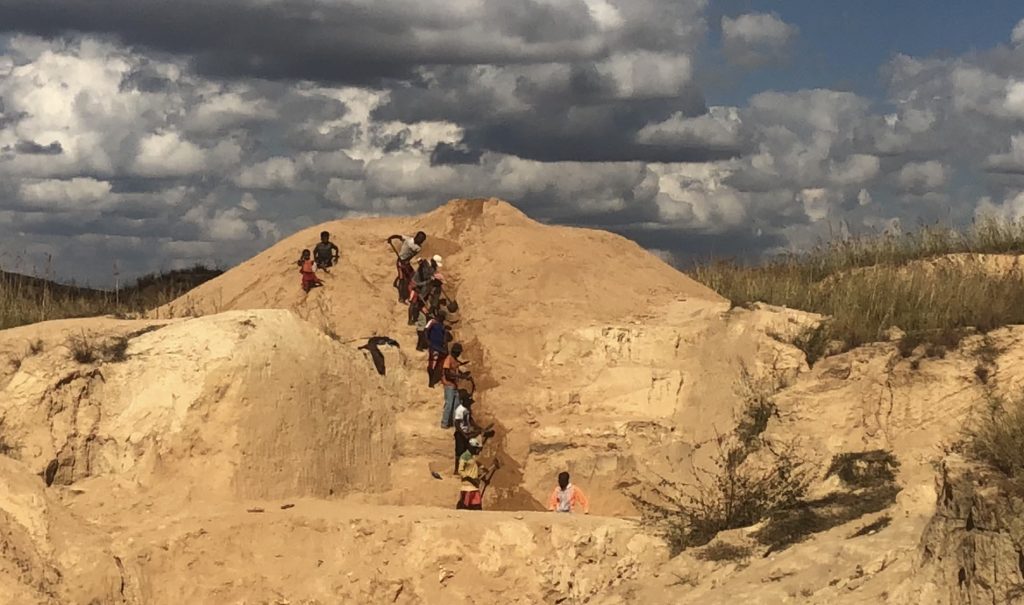
There are many precious and semi-precious stones found in Madagascar, with the most popular and valuable one being sapphires. The first sapphire was found in 1996 by a 12 year old boy in a river in the town of Illakaka.
As you can probably imagine, thousands of people flocked to Illakaka after that from all over the world to try and dig up the precious stones or sift them out of the rivers. Today there are still sapphire mines being dug, which we saw during our stop there.
It’s sad to see because the local people are the ones digging all day long and only making 10,000MGA (about $2) for their long, laborious hours. It’s a very dangerous job as well, and several people die in the mines if they collapse.
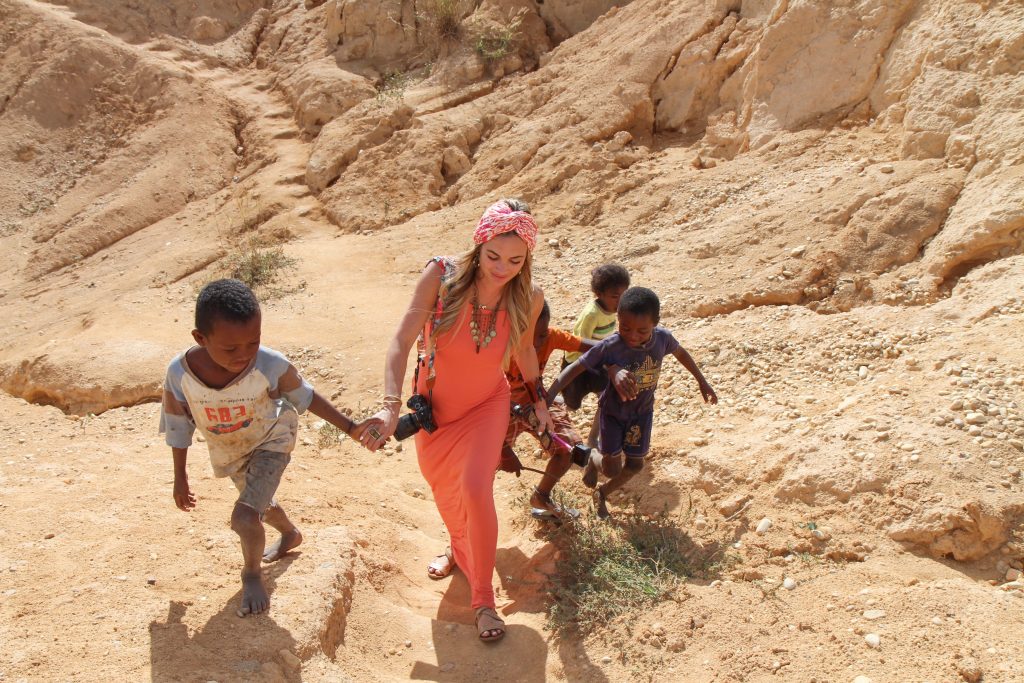
Even sadder is the fact that Illakaka is extremely corrupt and aggressive due to bandits and mafias constantly coming in and stealing from the locals (this is actually the case in a lot of areas). Plus the fact that the sapphires these people find are sold for hundreds to thousands of dollars, yet they only get paid pennies.
I tried to convince our guide to take me to the local village just outside of Illakaka where the people sell the raw sapphires to their “bosses” (the people who then cut them and sell them). That way at least I could give them money directly, but he insisted that it would be bad for the families and result in consequences.
It’s hard to give advice on how to help the miners and their families especially since there’s so little attention to the subject (and without sounding like a White Savior). Many people say the solution is to stop buying gems so that the demand is diminished, and the miners no longer have to work…but that would just put them out of a job, and money to survive.
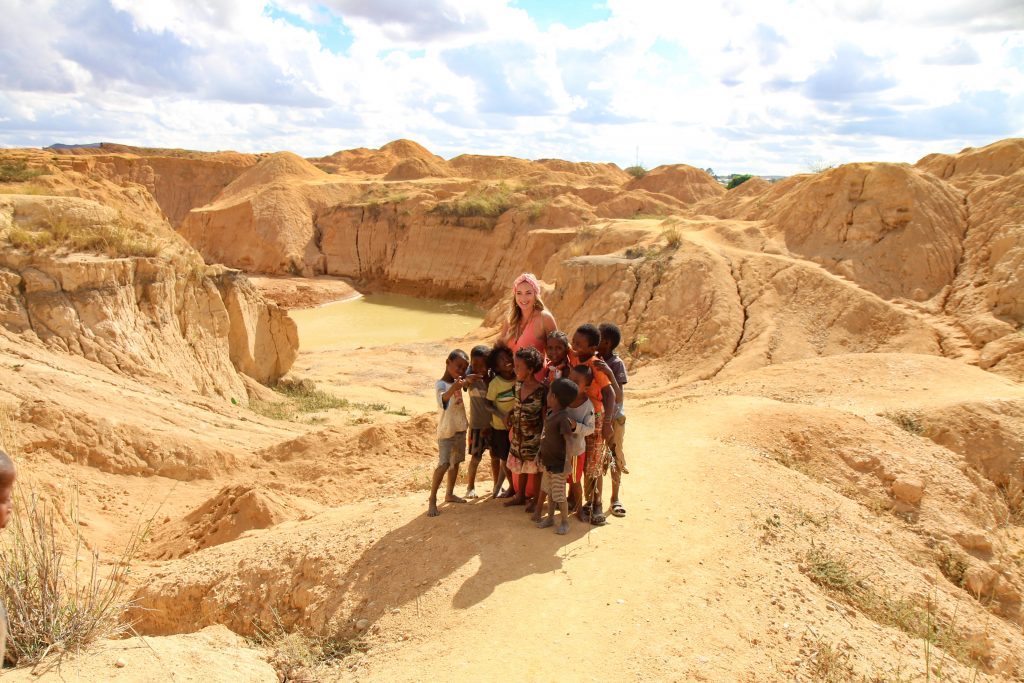
I would definitely say don’t buy anything from the “nice tourist shops” in the area selling gems. If you really want some, I would advise having someone who lives in Madagascar give you a contact for locals selling them instead.
But if you’re just wanting jewelry back home that has no sentimental value other than it’s appearance, I would say don’t buy it. The miners will never see the money, and the demand will continue to cause longer hours, lower wages, and even deforestation.
OH! Speaking of deforestation…the demand for sapphires and other precious stones is what leads to deforestation in Madagascar. AKA the killing off of the lemurs.
So this sapphire mining situation is really a sticky one. How do we support the miners and their families being worked excruciatingly hard for hardly anything, while also supporting a stop to deforestation?
I believe that if tourism were to spike and more tours focused on visiting nature reserves and parks, it would provide more and better jobs for the Malagasy people. It would even, perhaps, give the miners opportunities for higher paying work, and work that doesn’t harm the environment.
(If this topic interests you, please leave a comment below. I may see what I can do about starting some sort of travel foundation to spread awareness about this and implement the idea of employing people to work on reserves rather than mine them.)
SIDENOTE: The photos I took with the kids were because they kept running in my photos and it’s really hard to say no to cute kids. I asked permission from the guides to even post the pictures, but I would highly advise NOT to photograph people, especially without permission!
Read more about how to take photos when locals are aroundhere: https://mylifesamovie.com/5-travel-photography-rules-when-locals-are-around/
6 Hour Drive to Tulear
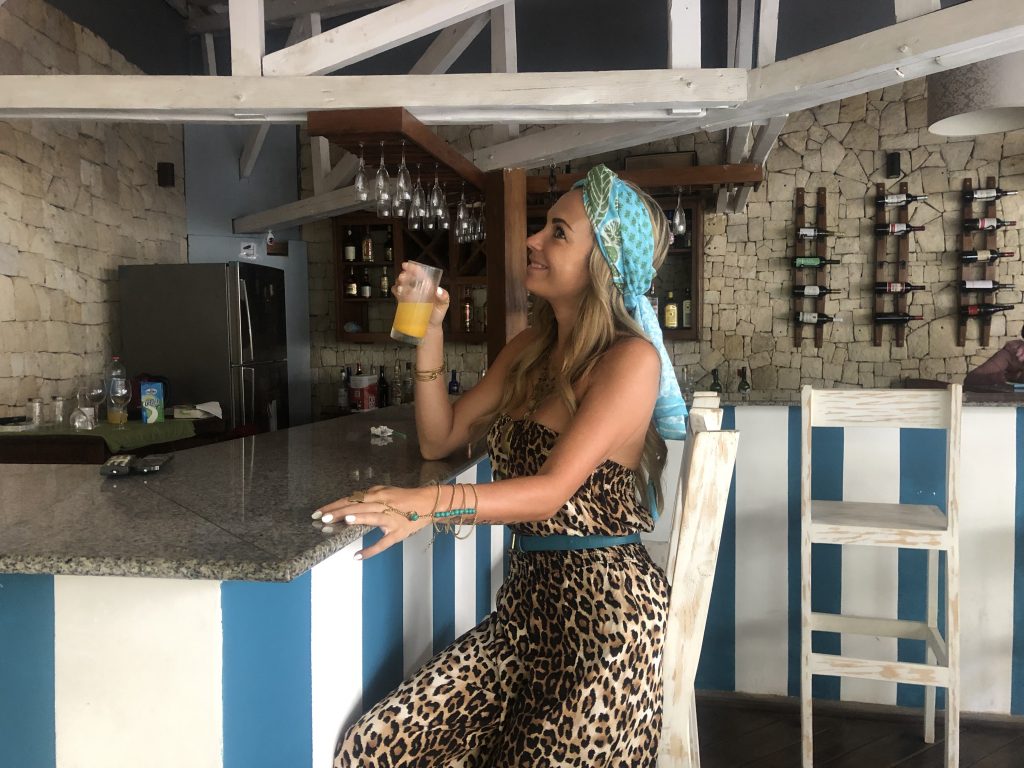
After driving leaving the main Illakaka town, there’s another area right after it where you can see where the locals wait for their “bosses” to come buy the sapphires off of them like I mentioned above.
Then it was another long but scenic drive to the next overnight destination called Tulear. Tulear is quite a big city and had a really nice hotel called La Batisse by Mikéa that we stayed at. There’s a really cute, chill patio restaurant and bar called Oasis where we had a delicious meal and even a “Baobab Cocktail”.
The area in Tuelar we stayed at was safe, and had many shops around it for tourists (like chocolate and jewelry), and then just couple blocks away is where all the locals market stalls are.
Sidenote: There is an airport in Tulear, so if you don’t want to make the two day drive from Antananarivo, you could fly, but you’d miss the scenic route. You may want to consider driving there then flying back though!
Tomorrow is finally the last leg to the grand climax of this epic adventure, but it’s going to be one hell of a ride to get there.
Please be sure to check my posts and subscribe to them on Instagram or Facebook to get the update for the post on it!
As always, if you enjoy my work, please please please share my posts and recommend them to others! That’s how my job and life is maintained!
Disclaimer: The Tour I went on was sponsored by WAU.mg !

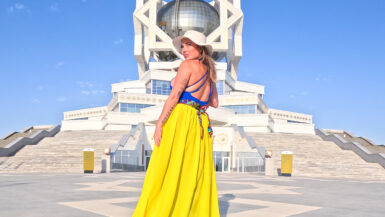
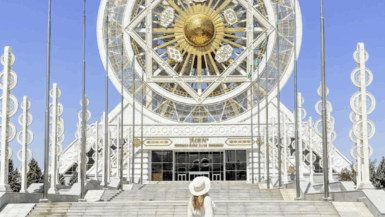
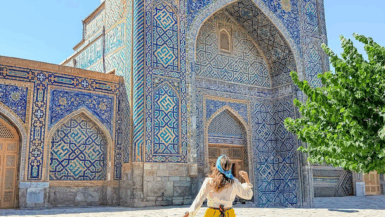
Thank you so much for sharing your helpful information. It’s very unique post. Good job.
Thank you for this interesting post and especially for the information about Sapphire mining and the problem of deforestation. I think it’s so important to talk about these topics and would definitely be interested in more!
Thank you Marie, I appreciate you reading it!
It sad to know that in such places like Madagascar people have to find a way to simply survive.I partially agree that tourism might solve this problem. But at the same time, it might aggravate the situation, and like with the sapphires the rich will get richer and the poor will have to work even harder.
Thank you for bringing this to my attention. I had no idea that sapphire mining was even happening in Madagascar. I like it when you cover these types of issues and hope to see more content like this on your blog.
Thanks for tour post. Really sad but needed to be showed.
I appreciate you taking the time to read it!
Hi Alyssa,
I learn about what’s happening around the world through your blogposts. I think you should definitely start a travel foundation to help spread awareness about such inhuman work situations. It’s borderline slavery even in the 21st century.
That makes me so glad to hear! Thank you for your feedback and for taking the time to read my posts!
Very interesting read, and thank you for sharing! I researched eco-tourism for a semester during my undergraduate degree, and it is interesting to see both sides to the story. There are certain locations that have been much better off due to spikes in eco-tourism, but there have also been some locations that were much worse off in the end due to it (with tourism comes the risk of damage to the natural beauty/draw or the location, leaving the location worse off than they were in the first place when the tourism slows down). There’s definitely examples of locations that have had great success with boosts in ecotourism, and it is mostly due to solid planning to ensure limited numbers of visitors, regulations, etc. Thank you for opening a discussion on such an important topic!
Oh yes I can definitely see the two sides of the story! It always worries me to promote certain destinations because I worry the tourism would destroy it due to irresponsible travelers, and then there’s destinations like here where I believe they would definitely benefit from it if it meant more emphasis on protecting the natural areas! Loved hearing your insight!
Would love to know more about sapphire mining as I had no idea
I appreciate your interest and concern about the issue